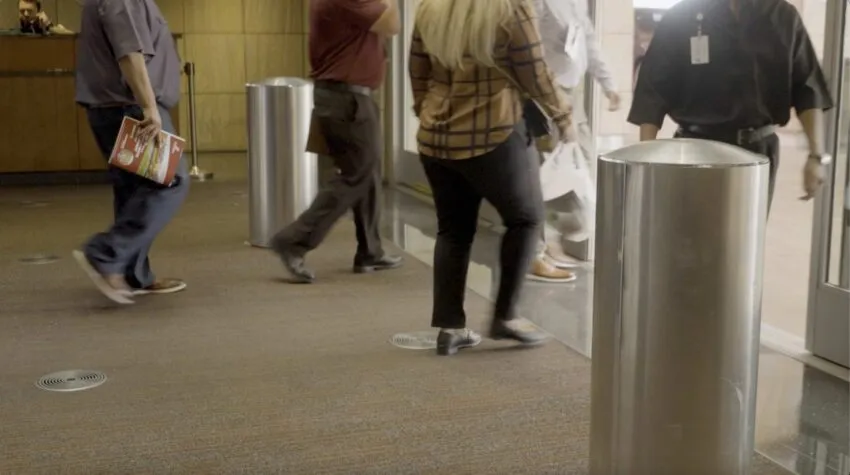California’s Assembly Bill 2975 (AB 2975) marks a major shift in hospital security—transitioning from voluntary safety measures to mandatory weapons detection requirements at key hospital entrances. Signed into law in 2024 and set to take effect by March 1, 2027, the bill establishes uniform standards designed to protect healthcare workers, patients, and visitors from rising incidents of workplace violence.
Which Hospitals Must Comply
AB 2975 applies to all general acute care and psychiatric hospitals licensed under California Health and Safety Code Sections 1250(a) and 1250(b). That means hospitals of every size—from urban trauma centers to rural facilities—must meet the same baseline security expectations.
While certain exceptions exist for small and rural hospitals or facilities with structural limitations that prevent installation of large-scale systems, most hospitals must implement automated screening technology capable of detecting weapons upon entry.
Mandatory Detection Points
Hospitals are required to install weapons detection systems at three key entrances:
- Main Public Entrance – Primary entrances require a comprehensive screening infrastructure capable of handling peak traffic volumes during shift changes and visiting hours. Installations of weapons detection systems may necessitate entryway modifications to accommodate equipment, queuing areas, and alternative routing options.
- Emergency Department Entrance – These high-risk access points must maintain detection capabilities while preserving rapid access for critical patients. The law acknowledges the unique operational demands of emergency care by permitting “treated-first, screened-later” protocols for patients requiring immediate medical intervention.
- Labor & Delivery Entrance (if separately accessible): Any entrance specifically designated for labor and delivery access falls under the mandate, requiring hospitals to carefully evaluate their facility access policies and potentially consolidate entry points to manage compliance costs effectively.
Handheld wands may supplement — but not replace — automated screening systems, except in limited cases such as space-restricted or rural hospitals.
Staffing and the Eight-Hour Training Mandate
AB 2975 requires that non-clinical personnel, not nurses or doctors, staff these checkpoints. Each must complete a minimum of eight hours of training covering:
- Policies and procedures on how to respond if a dangerous weapon is detected at the point of screening
- Operation and troubleshooting of detection devices
- De-escalation techniques for handling agitated individuals
- Implicit bias awareness to prevent discriminatory enforcement
This training ensures staff can balance patient safety with dignity and equity—especially in sensitive hospital environments.
Signage and Patient Rights
Hospitals must post clear signage near each screening point notifying the public that weapons screening is in effect. Importantly, the signage must also affirm that no individual will be refused medical care, in accordance with the Emergency Medical Treatment and Labor Act (EMTALA).
These notices reinforce the balance AB 2975 aims to strike: enhanced safety without compromising patient access or care.
Preparing for Compliance
While Cal/OSHA’s final rulemaking is underway, hospitals are encouraged to begin preparing now. Key early steps include:
- Conducting risk assessments and mapping all public entrances
- Evaluating technology options (from traditional magnetometers to advanced AI-enabled systems)
- Drafting screening policies and identifying required infrastructure upgrades
- Budgeting for equipment, staffing, and training programs
Using a layered approach that combines automated screening, trained staff, and transparent signage will ensure hospitals are complying with AB 2975. With the law’s timeframes, hospitals will have no more than 90 days after the standard is adopted to achieve full compliance, meaning planning now is essential for a smooth transition.
Download Risk Assessment Guide
The Bottom Line
AB 2975 establishes a clear message: hospital safety is no longer optional. The law’s layered approach, combining automated screening, trained staff, and transparent signage, sets a new statewide baseline for protecting healthcare environments. Hospitals that begin planning now, assessing entrances, evaluating technology, and budgeting for staffing and training, will be far better positioned to meet the March 2027 compliance deadline without disruption.
Early preparation not only ensures regulatory readiness but also demonstrates leadership to staff, patients, and the wider community. AB 2975 is an opportunity for hospitals to modernize security infrastructure, build public confidence, and create environments where safety and compassion coexist.




